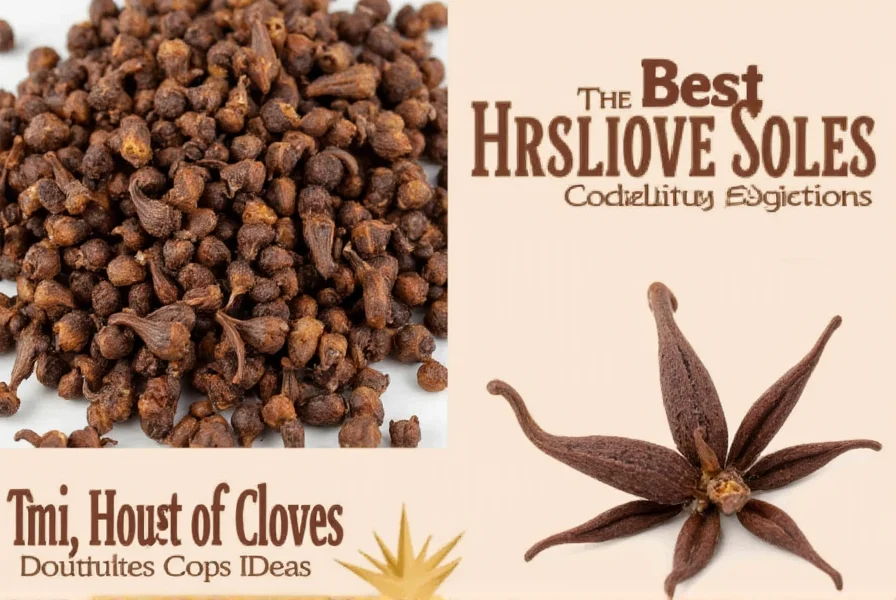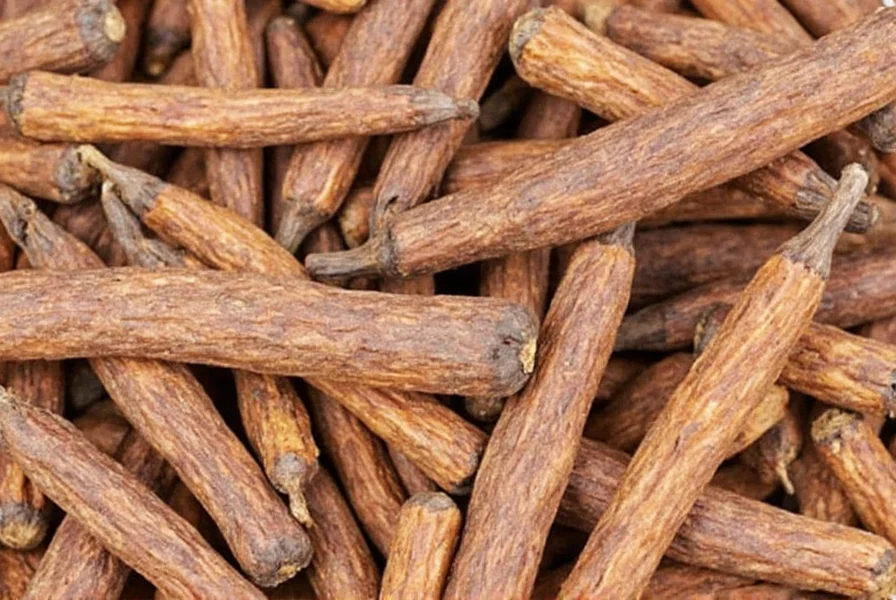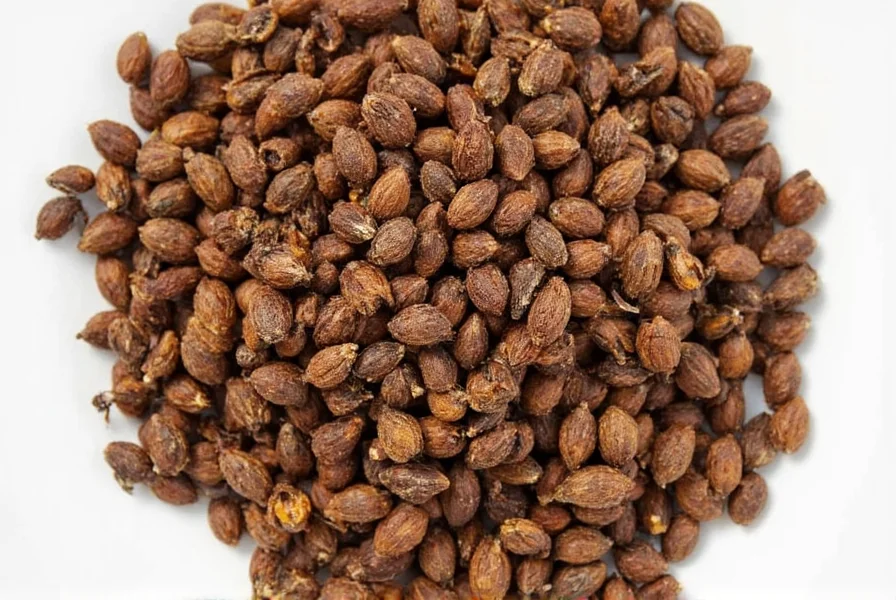The best ground cloves substitute is allspice (use 3/4 teaspoon allspice for every 1 teaspoon of ground cloves). Other excellent alternatives include cinnamon (1:1 ratio), nutmeg (1:1 ratio), or a blend of cinnamon and nutmeg. For pumpkin pie, use pumpkin pie spice at a 1:1 ratio. In savory dishes, consider cardamom or mace at a 3/4:1 ratio. Always adjust to taste as substitutes create slightly different flavor profiles.
Running out of ground cloves mid-recipe doesn't have to ruin your cooking plans. Whether you're baking holiday cookies, preparing mulled wine, or making a savory Indian curry, knowing effective ground cloves substitutes ensures your dish turns out perfectly. This comprehensive guide provides practical alternatives with precise measurements and specific recommendations for different culinary applications.
Understanding Clove Flavor Profile
Ground cloves deliver a distinctive warm, sweet, and slightly peppery flavor with subtle citrus notes. Their intense aroma comes from eugenol, the same compound found in clove oil used for dental pain relief. When seeking ground cloves replacement options, consider how each substitute affects both flavor and aroma in your specific recipe.
Top Ground Cloves Substitutes
Allspice: The Closest Match
Allspice provides the most similar flavor profile to ground cloves, combining notes of cinnamon, nutmeg, and clove. This makes it the ideal ground cloves substitute for baking and holiday recipes. Use a 3:4 ratio (3/4 teaspoon allspice for every 1 teaspoon ground cloves) to prevent overpowering your dish. Allspice works exceptionally well in gingerbread, spice cakes, and apple pie recipes that call for ground cloves.

Cinnamon: The Accessible Alternative
Most kitchens have cinnamon readily available, making it a practical ground cloves replacement. While milder than cloves, cinnamon shares similar warm notes. Use a 1:1 ratio when substituting in sweet recipes like pumpkin pie, oatmeal cookies, or chai tea. For savory applications like Moroccan tagines, combine cinnamon with a pinch of nutmeg for better flavor approximation.
Nutmeg: The Subtle Option
Freshly grated nutmeg offers a warm, slightly sweet flavor that can effectively replace ground cloves in many applications. Use a 1:1 ratio for most baking recipes. Nutmeg works particularly well as a ground cloves substitute in creamy dishes like eggnog, custards, and béchamel sauces where cloves' intensity might overwhelm delicate flavors.
Pumpkin Pie Spice: The Convenient Blend
For pumpkin pie and other fall desserts, pumpkin pie spice serves as an excellent ground cloves substitute at a 1:1 ratio. This pre-mixed blend typically contains cinnamon, ginger, nutmeg, and cloves, so it already includes clove flavor in balanced proportions. It's the perfect solution when you need a ground cloves replacement for holiday baking without measuring multiple spices.
Specialized Substitutes for Specific Dishes
For Baking and Desserts
When substituting ground cloves in sweet applications, consider these specialized options:
- Apple pie: Use equal parts cinnamon and nutmeg
- Gingerbread: Increase ginger by 1/4 teaspoon and add 1/8 teaspoon allspice
- Christmas cookies: Combine 1/2 teaspoon cinnamon with 1/4 teaspoon cardamom
- Pumpkin bread: Use pumpkin pie spice at 1:1 ratio
For Savory Dishes
Savory recipes requiring ground cloves substitute options need different considerations:
- Indian curries: Use cardamom at 3/4:1 ratio plus a pinch of black pepper
- Meat marinades: Substitute mace at 3/4:1 ratio
- Stews and braises: Use star anise at 1/2:1 ratio
- Middle Eastern dishes: Combine equal parts cinnamon and allspice
For Beverages
When making mulled wine, chai, or other spiced beverages:
- Mulled wine: Use allspice berries (3 for every 1 clove called for)
- Chai tea: Increase cinnamon by 1/4 teaspoon and add 1/8 teaspoon cardamom
- Hot apple cider: Use whole allspice berries simmered with the cider
| Substitute | Ratio | Best For | Flavor Difference |
|---|---|---|---|
| Allspice | 3/4:1 | Baking, mulled wine, meat dishes | Slightly less intense, more complex |
| Cinnamon | 1:1 | Pumpkin pie, apple desserts, chai | Sweeter, less peppery |
| Nutmeg | 1:1 | Custards, eggnog, creamy sauces | Milder, more delicate |
| Pumpkin Pie Spice | 1:1 | Fall baking, pumpkin recipes | More complex spice blend |
| Cardamom | 3/4:1 | Indian curries, Middle Eastern dishes | More floral, citrus notes |
What NOT to Use as Ground Cloves Substitute
Some common suggestions don't work well as ground cloves replacement:
- Ground ginger alone: Too sharp and lacks warmth
- Five-spice powder: Contains star anise which dominates other flavors
- Peppercorns: Creates completely different flavor profile
- Vanilla extract: Doesn't provide necessary warmth for spice-forward recipes
Pro Tips for Successful Substitution
Follow these expert recommendations when using ground cloves substitute options:
- Add substitutes gradually, tasting as you go
- For whole cloves substitution, remember ground cloves are more concentrated (use 1/2 teaspoon ground for each whole clove)
- In long-cooking dishes, add substitutes later in the cooking process to preserve flavor
- For baking, mix dry substitutes thoroughly with other dry ingredients first
- When making mulled wine or cider, use whole spice substitutes and remove before serving

Creating Your Own Custom Blend
For the most accurate ground cloves replacement, create a custom spice blend:
- Basic blend: 1/2 teaspoon cinnamon + 1/4 teaspoon nutmeg + 1/8 teaspoon allspice
- For baking: 3/4 teaspoon cinnamon + 1/4 teaspoon allspice + pinch of cardamom
- For savory dishes: 1/2 teaspoon allspice + 1/4 teaspoon cardamom + pinch of black pepper
This approach gives you control over the flavor profile and lets you adjust based on your specific recipe requirements.











 浙公网安备
33010002000092号
浙公网安备
33010002000092号 浙B2-20120091-4
浙B2-20120091-4